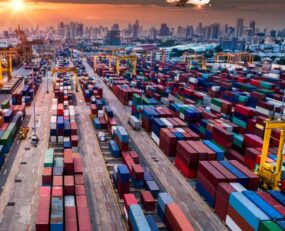
Italy will probably become the first G7 country to formally endorse and become part of China’s Belt and Road global investment programme, in a move that has raised red flags in Washington and Brussels. The Italian Prime Minister Giuseppe Conte said that the Memorandum of Understanding (MOU) might be signed later this month, when Chinese President, Xi Jinping, visits Italy from March 22-24.
The “Belt and Road Initiative” (BRI) aims to link China by sea and land with south-east and central Asia, the Middle East, Europe and Africa, through an infrastructure network. However, Chinese BRI investments have become increasingly contentious in the EU. Officials in Brussels are concerned the programme favours Chinese companies, creates debt traps for recipient states and is being used to further China’s strategic influence across the continent. Several central and eastern European countries have already signed bilateral memorandums supporting BRI, including Croatia, Czech Republic, Hungary, Greece, Malta, Poland and Portugal.
The Italian government is understood to be planning to give Chinese companies greater access to the port of Trieste and Genoa and push for further cooperation between the electricity providers of both countries. China already accounts for nearly a third of the trade through Genoa. Trieste is one of the region’s busiest ports and has strategic location advantages for trade between the Suez, Mediterranean, Central-Eastern Europe and the new Arctic Route. These advantages include its 18-20m water depths, legal status as an international free port as well as being the most northern part of the Adriatic Sea.
Since its first engagement with China in 2016, Trieste has increased its container traffic as it works to capture some of the trade that passes between Europe and China via sea routes. The port handled 449,481 TEU in 2016 but 2018 saw a dramatic jump to 625,767 TEU (+39.2%). The Italians are confident that Trieste will supplant Piraeus as China’s maritime gateway to southern Europe, despite China arguing that the Greek port has increased container traffic after its acquisition by COSCO in 2016. Indeed, the Greek port is at the periphery of Europe, while Trieste is nearer to its heart and is already connected by rail to Austria, Belgium, the Czech Republic, Germany, Hungary, Luxemburg and Slovakia.
China’s foray into Europe has been well-documented. In addition to the Greek port of Piraeus, the Chinese shipping giants Cosco Shipping and China Merchants Port Holdings have taken over the terminal in Zeebrugge, the second-biggest port in Belgium after Antwerp. Overall, in the past decade, Chinese companies have acquired stakes in 13 ports in Europe. These ports handle about 10% of Europe’s shipping container capacity. For comparison, while Chinese state-owned firms are marching across Europe, China bans non-Chinese terminal operators from owning more than 50% of Chinese terminals.
However, these considerations are of secondary importance to Italy which should come at no surprise given the country’s dire need for massive investments to revive its struggling economy and the stalled construction sector. Regardless of the motivation behind the move, the acceptance of the BRI will indisputably have significant implications which go well beyond Italy and infrastructure projects.
Source: Transport Intelligence, March 12, 2019
Author: Violeta Keckarovska
For further data on port volumes, freight rates, inventory-to-sales ratios, and over 100 additional data sets, click here.